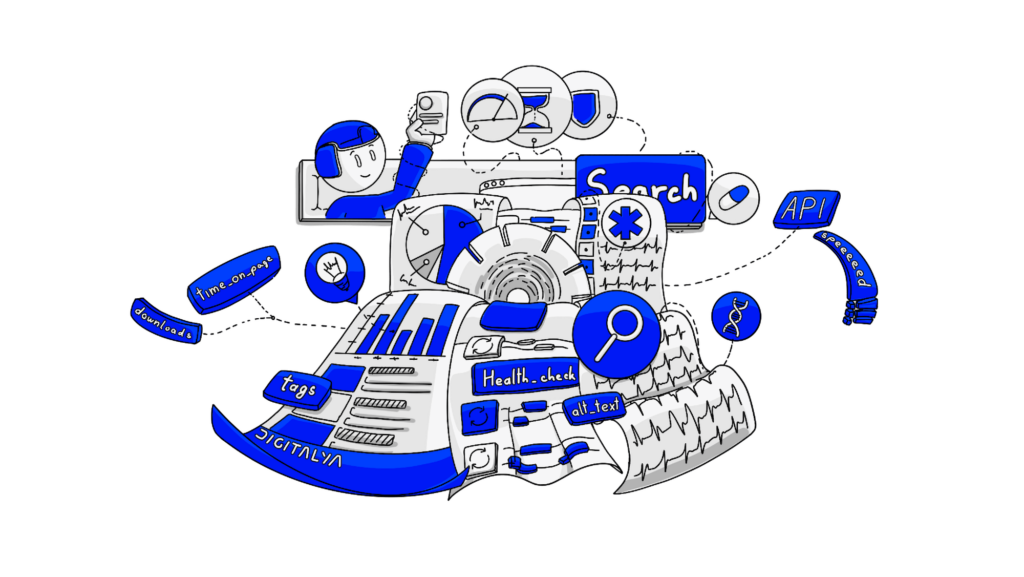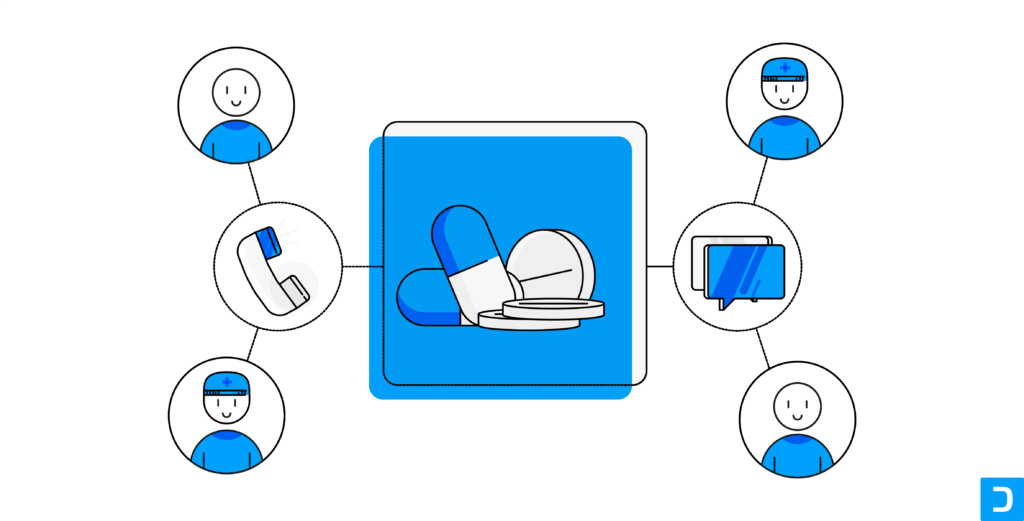One of the challenges that a development company faces when building an app is, besides aligning the core features and fitting to the client’s needs, the cross platform app development. In other words, making it work on the various platforms that people use. Easier said than done – something which developers know well.
1. What is cross platform app development?
Gone are the days when the focus was on one main platform, and many developers mastered it. Recent market data show that in the U.S. only, in the past year, the mobile consumer market has been divided almost equally between the Apple and the Android platforms. At a first glance, it shouldn’t be much trouble for mobile app developers to include one more environment in their work. In reality, things are much more complicated. A product development company may need to choose between native and crossplatform because of development costs, timing, and skills required. It may seem counterintuitive that in a world with multiple platform technologies, a mobile developer should face such a decision. However, the requirements of the different native platforms impose rigorous analysis from both the tech and business point of view.
So, what is this cross platform app development that has become a buzzword? According to Techopedia, it is a practice regarding software products & services development that functions on multiple platforms. It involves employing various methods to accommodate the app or software product on multiple operating systems. Ios, Android, and Windows are the main operating systems on the consumer’s devices. Still, there are also opensource technologies such as Linux, which leads to the emergence of opensource crossplatform development.
Most apps developed today are designed for mobile use, so let us see what it means native vs crossplatform mobile app.
2. Cross platform mobile development vs native
When you consider the comparison between native app development and cross platform app development, there are two main criteria to consider: app development costs and the mobile development tools as part of the development processes.
Let us analyze the cost perspective for mobile application development. Data compiled by Statista back in 2015 showed that the median cost of a development hour for native development ranged, in the U.S., between 150 $ for ios and Windows and 168 $ for Android. At the same time, the crossplatform developers charged 125 $ per hour. In the United Kingdom, the costs were about half of the ones in the U.S., while in Eastern Europe, at about a quarter. That was the cost level 6 years ago. Although they haven’t published more recent data, you can easily imagine the increase.
Native mobile app development increases the compatibility with a certain platform and involves a high degree of expertise. For some businesses, it may be easier to find specialists who master a single codebase than developers who specialize in crossplatform mobile development tools. There are more chances to find talents out there who can work with Java or Kotlin for Android-based apps or Objective-C and Swift for devices using iOS.
But if your business strategy covers multiple mobile environments, you should hire development teams for each single code environment, which is a challenge in itself, given the scarcity of talents. Then, they should ensure that the separate codebases are constantly maintained. So, any change in your business may also impact the functioning of the native codebases that your teams have built.
Native development has its indisputable advantages, though. Each platform provides unrestricted access to APIs and tools for developers working in that particular environment, which renders a large degree of liberty to programmers in designing and building the app. As a consequence, because the app builder benefits from a large number of tools and resources, the native-built products tend to be more scalable. In addition, a native application offers a better user experience and is ranked better in the respective app store.
Let’s see now what cross platform app development has to offer.
3. Advantages of cross platform app development
While native app development still is preferred by most development companies, working with a crossplatform app framework has become a choice for about one-third of mobile app developers.
Reduced cost and timing is the first advantage that catches the attention of many startups and SMEs developing apps. As previously shown, the hourly cost for a cross platform mobile developer was fairly less than for native mobile app developers. It is a tendency valid to the day. The individual cost is less, but a company using crossplatform mobile development only needs one team of programmers instead of several for the native apps. Also, the crossplatform app development framework used to build a product takes less time than building it on a native platform because it involves a single cycle of development.
Easier maintenance is a benefit deriving from the fact that this technology needs just one code base because of the use of only one crossplatform tool. We’ll talk more later about the cross platform app development frameworks. As a consequence, platform updates can be synced across all platforms.
The code for crossplatform applications is reusable, making the development process more efficient. This way, in the app design stage, for instance, you only need to use one code for all platforms, saving precious time.
Another important advantage is the integration of the crossplatform app with cloud hosting. This gives a lot of flexibility in managing the app with the help of plug-ins and extensions. Cloud-native apps can be easily built using nodeJS.
Last but not least – cross platform development provides an extended consumer reach for tech products. Having an app that can easily run on all available platforms means access to a wider market. The more people interact with your app, the more chances to secure paying users.
But no matter how amazing cross platform app development sounds, you must also be aware of its downfalls to learn how well it fits your business model.
4. Disadvantages of cross platform app development
The biggest disadvantage, perhaps, is the difficulty of code design. Crossplatform app developers need to consider various exceptions when building the code so that the app runs on all devices and platforms. Having a single code that comprises many different adaptions is a serious challenge. This may lead to difficulties in finding skilled enough talent to handle this kind of coding. This is when mobile app development services come in handy, as such dev companies already have a skilled team, so your company doesn’t need to hire extra talent.
Another aspect to consider is that cross platform apps work slower than native ones. Although there aren’t significant differences, for certain user clusters, speed may be the decisive argument when choosing between competing apps.
Some functions may not be available for crossplatform app development, such as geolocation, microphone, or camera. Native app developers benefit from a wide range of tools and resources that the platforms provide to facilitate the functioning of the respective devices. For privacy reasons, devices may render it more difficult to cross platform developed apps to access some features.
Compared to the native apps, for which there are plenty of UX tools made available to programmers, the cross platform mobile apps make do with somewhat restricted options. This translates into a diminished user experience for cross platform apps compared to the native ones. For a startup or an SME starting to build an app, the way potential consumers receive it is a key turning point.
To avoid costly trials and errors, apps can be tested in their very initial stage, without even the need to build an MVP, by going through a design sprint workshop. This way, no matter the technology used, whether native or cross platform app development, you can learn early on what you need to tackle.
If you already have an idea that this type of development is the right fit for your company, we’ll further help you to find the crossplatform app development framework that’s right for your product.

5. Best cross platform app development frameworks
React Native
As revealed in a study by Statista, React Native is the preferred framework for cross platform app development. It was used by 42% of software developers worldwide in 2019 and 2020, slightly decreasing to 38% in 2021 (still the most used over the past three years).
React Native allows the use of JavaScript. Programmers can write modules in CSS and Javascript, also in Swift, Python, and Objective. It is an open-source crossplatform app framework, and the codebase can be reused. React Native is fast in converting the source code to the native elements, so it is a good choice if you want to develop a prototype rather fast. It goes very well with agile development. You can read more about how React Native works from our experience with this framework.
For a better idea about how such an app looks like and what can be achieved with React Native, you can also read about FeetUp® – a react native app that offers tailored inverted yoga instructional videos.
Flutter
The same study by Statista shows that Flutter is very close to React Native in terms of preferred crossplatform app framework. It is an SDK (software development kit) based on Dart, Google’s in-house language, launched in 2018. Flutter provides various UI elements and widgets to choose from. It has a highly performant rendering engine. The Hot Reload feature allows the live view of coding changes without saving it.
Cordova
Apache Cordova ranks third in the crossplatform developers’ preferences. It is also an open-source framework released by Adobe. Like React Native, Cordova, too, uses CSS and Javascript, as well as HTML5. It enables developers to use key phone resources such as camera, geolocation, notifications, contacts, etc.
Ionic
Ionic framework is an HTML5 SDK that is also open-source and, very importantly, free to use. It is a good choice to build engaging apps, with high interactivity, due to its library of UI elements, gestures, typography, themes, and other tools, that can be reused. Like Cordova, it uses CSS and Javascript, as well as HTML5. The APIs that Ionic uses are Virtual DOM, TypeScript, async, and JSX, which makes it quite easy to use and a good choice for Progressive Web App (PWA).
Xamarin
Xamarin is the fifth on the top of the preferred frameworks by crossplatform app developers in the past three years. Backed by Microsoft, it is suited for .net code and supports the Razor template engine, as well as the C#, F# languages. The friendly interface makes it easy to use by programmers, especially when they need to tackle the client’s specific preferences. The code is entirely reusable and has an automatic testing feature – TestCloud.
6. When to choose cross platform development for your app?
Among the advantages we already mentioned, cost and time savings are very important arguments in its favor. Thus, if you are a CTO looking to get your app implemented fast, then update it just as fast, then this is the right choice.
Compared to native app development, the use of cross platform frameworks accelerates the app development process. So if your company is in the MVP phase and you need a proof of concept fast, which can be easily and quickly readjusted, then you should seriously consider this technology.
Still, consider the app roadmap and the complexity you intend to reach. Some features may require a certain degree of finesse which can only be achieved with native platforms development.
You can also choose this type of app development when you have a team that masters the languages needed for those frameworks. It is important that your programmers feel at ease with the technology. This way, the time saved for implementation is not annulled by the time needed to learn the new frameworks. It is also important to look at the technical support available for the crossplatform app development framework so that the process runs smoothly.
A good moment to use this technology is also if you need to fasten the product-to-market stage. Native development, though is a good choice for complex applications, takes significantly more time than crossplatform app development. If your product journey doesn’t allow delays in the go-to-market phase, you should opt for the frameworks we’ve described.
Now we’ve seen the pros and cons of cross platform app development and the most popular frameworks. The question is, when does it become a choice to consider?
7. Conclusion
In conclusion, cross platform app development is a good choice for companies wanting to have a fast proof of concept or an MVP and get the product out there for as many users as possible, covering all possible devices.
It is a good option if you can’t/ don’t want to hire multiple development teams specialized on native platforms and you can’t afford to invest a lot of time and money in native development. On this matter, if your existing team does not have the technical competencies for the crossplatform frameworks you want to work with, a good option is to outsource the mobile app development services.
Remember that the decision concerns the effort vs result ratio, considering the product roadmap, the time and financial resources, and the available talent.
If you want more food for thought, you can get inspiration from our list of trending mobile apps in 2022.










